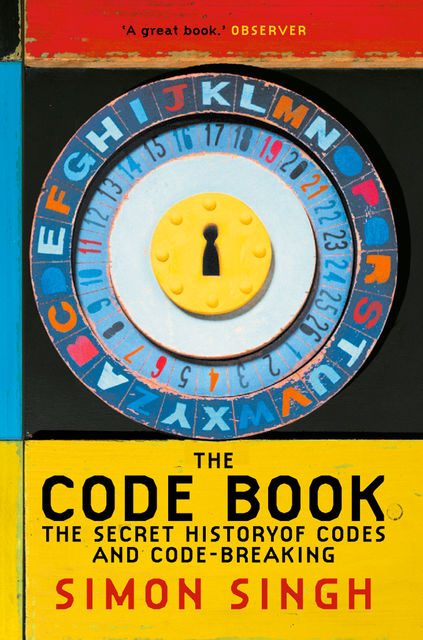The Code Book: The Secret History of Codes and Code-breaking
Ця книжка зараз недоступна
688 паперових сторінок
- Рік виходу видання
- 2010
Враження
- Evelinaділиться враженням5 років тому👍Раджу
Цитати
- Valentyna Brusenkoцитує8 років томуJust as Whit Diffie predicted in the early 1970s, we are now entering the Information Age, a post-industrial era in which information is the most valuable commodity.
- Valentyna Brusenkoцитує8 років томуThe uncertainty principle is another weird consequence of quantum theory.
Wiesner’s quantum mo - Valentyna Brusenkoцитує8 років томуIt is this ability to block certain photons that explains how Polaroid sunglasses work. In fact, you can demonstrate the effect of Polaroid filters by experimenting with a pair of Polaroid sunglasses. First remove one lens, and close that eye so that you are looking with just the other eye through the remaining lens. Not surprisingly, the world looks quite dark because the lens blocks many of the photons that would otherwise have reached your eye. At this point, all the photons reaching your eye have the same polarisation. Next, hold the other lens in front of the lens you are looking through, and rotate it slowly. At one point in the rotation, the loose lens will have no effect on the amount of light reaching your eye because its orientation is the same as the fixed lens – all the photons that get through the loose lens also pass through the fixed lens. If you now rotate the loose lens through 90°, it will turn completely black. In this configuration, the polarisation of the loose lens is perpendicular to the polarisation of the fixed lens, so that any photons that get through the loose lens are blocked by the fixed lens. If you now rotate the loose lens by 45°, then you reach an intermediate stage in which the lenses are partially misaligned, and half of the photons that pass through the loose lens manage to get through the fixed lens.
fb2epub
Перетягніть файли сюди,
не більш ніж 5 за один раз


